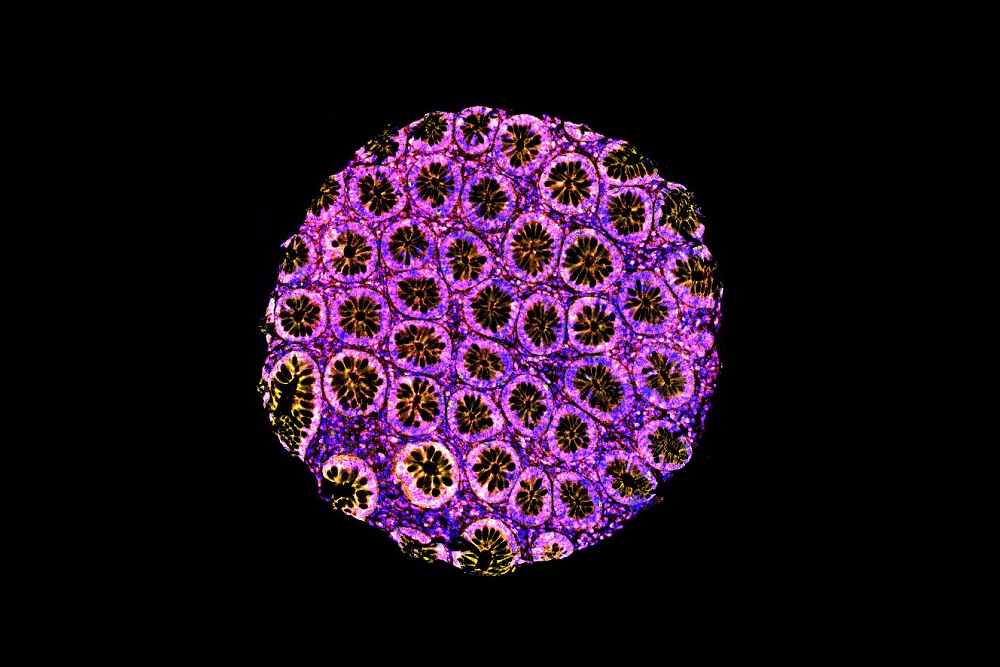Trialled and true
December 3, 2021
Share

Cancer continues to be a leading cause of death in Canada and around the world. The Canadian Cancer Trials Group (CCTG), based at Queen's University, plays a critical role in the fight against cancer by designing and administering clinical trials in cancer therapy, supportive care and prevention across Canada.
![[Photo of Dr. Janet Dancey]](/gazette/sites/gazettewww/files/assets/stories/2020/JaneyDancey-11-Edit%20-%20Copy.jpg)
“Cancer touches everybody,” says Dr. Janet Dancey, CCTG’s director. “Through clinical trials, we help reduce the burden of cancer by defining new standards of care, diagnostic tests and roles of therapies for different cancers.”
Since its establishment in 1980, CCTG has supported more than 600 phase I-III trials enrolling approximately 100,000 patients from 40 countries on six continents. At any given time, CCTG has 60 to 70 active clinical trials.
CCTG has grown to become the largest research group at Queen’s with a network of scientific leaders from all the cancer centres and hospitals in Canada and a global network of nearly 20,000 investigators and clinical trial staff.
“We are capable of executing a whole range of trials for Canadians who have or may be at risk for cancer,” says Dr. Dancey. “Where we distinguish ourselves is that we have the largest portfolio of cancer trials, a great track record and routinely engage international partners. We tend to be the academic organization that does the largest, the most complicated and the best executed clinical trials.”
“CCTG is a huge point of pride for Queen’s,” affirms Dr. Nancy Ross, Vice-Principal (Research) at Queen’s. “The dedication and professionalism of the CCTG team has led them to be a global leader in this important work. They have set the standard for expertise and quality in their ability to quickly get platforms in place to launch important trials that have real impact on medical treatments.”
Putting together a clinical trial, especially a large one with thousands of participants, can be a monumental task.
“There is nothing more collaborative than mounting a clinical trial,” Dr. Dancey says. “You need investigators not just to lead the study, and to collect and analyze the data, but you need an army to organize and make sure it runs smoothly and you need patient volunteers willing to participate.”
![Thank you empowering us to be bold. For 25 years, the CFI has mobilized Canada's research institutions to think big and take risks in addressing the world's most pressing challenges - from understanding the origins of the universe to improving cancer treatment and care. queensu.ca/research]](/gazette/sites/gazettewww/files/assets/stories/2020/21-0072-Queen%27s%20VPR-CFI%2025th%20Anniversary%20Ad%20-%20Half%20Page%20-%208.97x10%20-%20Print.jpg)
This is true for drug trials, but also for trials examining non-pharmaceutical interventions that may improve cancer outcomes such as diet, lifestyle, surgery and psycho-social aspects.
“Part of our mission is to do trials that wouldn’t be done by industry,” Dr. Dancey says. While CCTG takes pride in global collaboration, it also pays particular attention to what’s pertinent to Canadians. “The best way to help Canadians is to focus on questions that are relevant to Canadian patients and our healthcare system.”
Much of the work that takes place through CCTG has led to important treatments and continued research. One trial from 15 years ago showed that for lung cancer patients, chemotherapy improved survivorship after surgery.
“That is still standard treatment now,” Dr. Dancey affirms. “The trial is an example of how the Canadian lung cancer community is a leader. We help researchers to collaborate, be real leaders of trials testing Canadian-developed treatment ideas have the potential to become new treatments for patients across the world.”
Similarly, a recent CCTG trial, published in 2021, was the first to show that stereotactic body radiation therapy (SBRT) is more effective than conventional radiation treatments in alleviating pain from spinal metastases. The study showed that using fewer and higher doses of precisely delivered SBRT is more effective than the standard treatment with 35 per cent of patients reporting an enduring, complete control of pain at three months post-radiation.
“There’s been lots of uptake following the results of that trial being published, and it’s now considered the standard of care,” says Dr. Dancey.
Support from funders including the Canadian Cancer Society and the Canada Foundation for Innovation (CFI) has been critical to the CCTG’s ability to have such impact.
“Prior to CFI funding, CCTG was at an inflection point,” she says. “Trial funding was limited, yet trial complexity had increased due to scientific advances and regulatory compliance requirements. CFI funding allowed us to continue to grow to conduct first-class research.”
“The support of the CFI has been indispensable to the success of the CCTG,” agrees Dr. Ross. “This global effort takes a great deal of operational and administrative coordination with hundreds of staff and faculty managing the processes from recruitment to analysis. Ultimately, though, it’s important to remember that the CFI is investing in improved survival and quality of life for cancer patients.”
Written by Colleen Seto and originally published in the Excellence in Research and Innovation special feature in The Globe and Mail on Nov. 19, 2021.